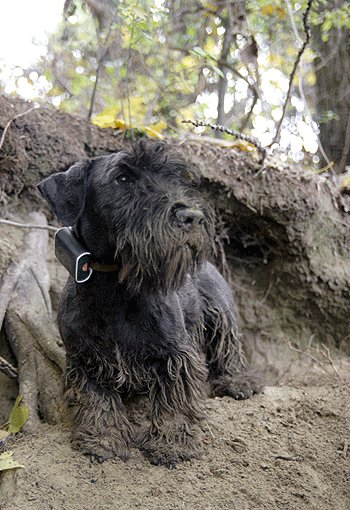Cesky terriers: Ideal for UK stalkers

The British Isles are the home of the terrier. Although types from England, Scotland, Wales and Ireland have crossed seas and continents, all bloodlines can be traced back to the UK and Ireland.
Other nations have contributed to the development of the terrier, and created their own types with strong identities, such as Germany’s earth dog, the Jagdterrier; the Australian terrier; and the American pitbull, whose bloodlines can all be traced back to Irish and Black Country fighting dogs that were taken to the US by Irish and English immigrants.
One dog that stands out among the international breeds is the Czech Republic’s Cesky terrier, which, despite its increasing popularity in the international show world, is still worked by European hunters. The breed was created by a Czechoslovakian geneticist, Frantisek Horak, in 1948, by crossing the Scottish and Sealyham terriers. At the time, the Sealyham had a reputation for having the highest prey drive of any earth dog, as well as being able to pack well and cover ground efficiently despite its short legs, while the Scottish terrier had not yet degenerated into the show pony that it is today.
Horak had first become interested in working terriers through hunting his own Scottish terrier and subsequently having the opportunity to buy an English-bred Sealyham — a type he had seen working. He wanted the dog he was to breed to be an attractive working dog that could bridge the gap between show and work, so he opted for a soft silky coat, which, though not very practical, does at least “barber” well. He wanted a dark dog, too, because he liked the colour of the Scottish terrier, but he also wanted to keep the drop ears of the Sealyham.
It took Horak only six generations to breed a terrier true to type from the original union of the Sealyham dog Buganier Urquelle and the Scottish bitch Scotch Rose. He bred down four bitches, which are found in the pedigree of every Cesky alive today.
Horak was following in the footsteps of Sir Jocelyn Lucas, whose experimental crosses between Sealyhams and Norfolk terriers in the early 20th century resulted in the Lucas terrier. Similarly, Horak wanted to produce a unique type of hunting terrier to take to his native Bohemian forests.
Originally he intended the Cesky to hunt badgers and foxes below ground and track deer and drive wild boar above ground. Thus, the dog stands at a practical 10.5in to 11.5in at the shoulder and has a long back — like the Dandie Dinmont, whose blood can also be found in the working Sealyham — which gives it the flexibility hunting terriers need.
However, in the early years, in common with England’s Border and Bedlington terriers, the Cesky was known as a slow starter but, once entered, wed well to its quarry.
Horak made good use of the dog and, on his last day of hunting, it accounted for 12 foxes — all dug to. The story goes that Horak brought back a fox cub from that hunt, which he reared before he died in 1997.
Today the Czech Hunting Club is keen to preserve the working instincts of the Cesky, and holds tests in which the dogs are asked to find quarry both above ground and below. The dogs are also marked on their gameness in the face of quarry to ground. However, blood tracking is where the Cesky really comes into its own, for Czech owners strive to breed a dog that can track a wounded deer over a considerable distance.
Ceskys are often worked in conjunction with Teckels or Dachshunds, and they track in a similar way. Indeed, the Czech Hunting Club’s working tests for the Dachshund are exactly the same as those for the Cesky. Furthermore, Slovakian hunters use Ceskys in mixed terrier packs to drive foxes, track wounded deer and pick-up pheasants and duck from water.
New to these shores
The first Cesky reached the UK in 1989 and was bred by Horak himself. The dog, Erb Lovu zdar, was imported by Liz and Harold Gay, who are well-known breeders of the Glen of Imaal terrier. Sadly, the type never found favour as a working dog here, but it is now growing in popularity among the UK’s showing community.
I was happy to find at Crufts this year that the Cesky is among the few types that still display a workmanlike frame, with terrific jaws and teeth, although I was concerned that its coat is a little too soft.
On the Continent, it remains popular as a working dog. A Slovakian friend of mine, Matej Hraško, has dug over his Cesky many times to account for foxes, and has used it successfully to track roe. He likes its practical size, determination and great prey drive.
The Cesky is a smart working terrier. Now that an increasing number of UK deerstalkers are looking for tracking dogs, there is, perhaps, an opening for it here.








